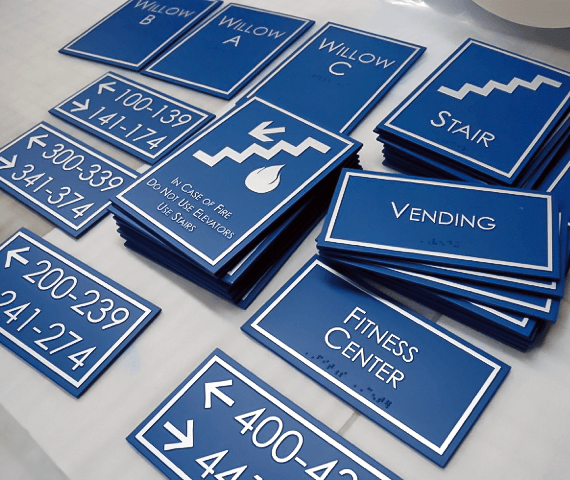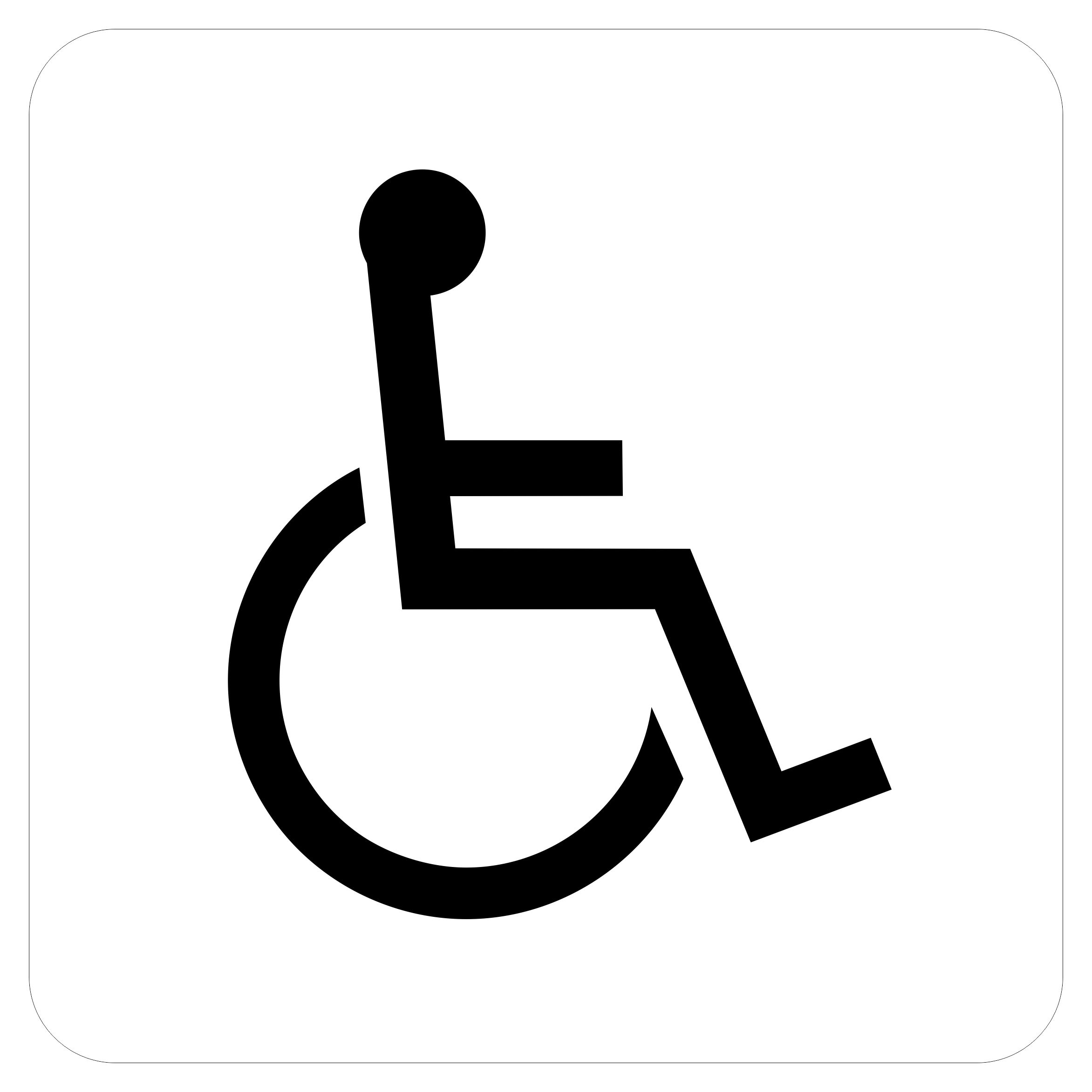Personalizing ADA Signs to Satisfy Your Particular Needs
Discovering the Key Functions of ADA Indicators for Boosted Ease Of Access
In the realm of accessibility, ADA signs function as quiet yet effective allies, making sure that rooms are navigable and comprehensive for individuals with specials needs. By incorporating Braille and tactile components, these indications damage obstacles for the aesthetically damaged, while high-contrast color design and clear fonts accommodate diverse visual needs. Their strategic placement is not arbitrary but instead a computed effort to assist in smooth navigating. Yet, beyond these attributes exists a deeper narrative about the advancement of inclusivity and the continuous dedication to producing fair spaces. What more could these indicators represent in our search of global access?
Value of ADA Conformity
Ensuring conformity with the Americans with Disabilities Act (ADA) is important for promoting inclusivity and equal gain access to in public spaces and offices. The ADA, established in 1990, mandates that all public centers, companies, and transportation services accommodate people with handicaps, guaranteeing they take pleasure in the exact same rights and opportunities as others. Compliance with ADA requirements not just meets legal responsibilities yet also improves a company's online reputation by showing its commitment to diversity and inclusivity.
One of the vital facets of ADA conformity is the application of accessible signage. ADA signs are designed to make certain that people with impairments can easily browse via rooms and structures.
Furthermore, adhering to ADA regulations can minimize the danger of possible penalties and legal effects. Organizations that fall short to abide by ADA standards may encounter legal actions or fines, which can be both economically burdensome and harmful to their public photo. Therefore, ADA compliance is important to fostering a fair setting for everybody.
Braille and Tactile Elements
The incorporation of Braille and responsive elements into ADA signs embodies the concepts of ease of access and inclusivity. These attributes are important for people who are aesthetically damaged or blind, enabling them to navigate public rooms with greater self-reliance and self-confidence. Braille, a tactile writing system, is essential in supplying written information in a style that can be conveniently perceived via touch. It is generally put under the corresponding text on signs to guarantee that individuals can access the info without aesthetic aid.
Responsive components expand past Braille and consist of elevated personalities and signs. These elements are created to be discernible by touch, allowing people to recognize area numbers, restrooms, exits, and various other important locations. The ADA sets particular guidelines regarding the dimension, spacing, and positioning of these tactile aspects to optimize readability and ensure uniformity across different environments.

High-Contrast Shade Plans
High-contrast color design play a pivotal duty in improving the visibility and readability of ADA signs for individuals with aesthetic problems. These schemes are essential as they maximize the difference in light reflectance between text and background, making certain that indicators are quickly noticeable, even from a range. The Americans with Disabilities Act (ADA) mandates the use of details color contrasts to suit those with restricted vision, making it a vital aspect of compliance.
The efficiency of high-contrast colors depends on their ability to stand out in different lights conditions, including poorly lit atmospheres and locations with glare. Normally, dark text on a light background or light text on a dark background is utilized to achieve optimum comparison. Black text on a white or yellow background supplies a raw aesthetic difference that aids in quick acknowledgment and understanding.

Legible Fonts and Text Dimension
When considering the layout of ADA signs, the option of readable font styles and appropriate message size can not be overemphasized. The Americans with Disabilities Act (ADA) mandates that fonts should be sans-serif and not italic, oblique, manuscript, extremely decorative, or of unusual kind.
According to ADA standards, the minimum message height need to be 5/8 inch, and it ought to increase proportionally with checking out distance. Uniformity in message size adds to a cohesive visual experience, aiding people in navigating settings efficiently.
In addition, spacing between lines and letters is essential to readability. Sufficient spacing protects against characters from showing up crowded, enhancing readability. By adhering to these criteria, designers can substantially improve availability, making certain that signage offers its desired purpose for all people, no matter of their visual abilities.
Reliable Positioning Techniques
Strategic positioning of ADA signs is crucial for making the most of ease of access and guaranteeing compliance with lawful criteria. ADA guidelines state that signs need to be installed at a height in between 48 to 60 inches from the ground to guarantee they are within the line of sight for both standing and seated individuals.
Additionally, indications must be positioned surrounding to the latch side of doors to permit easy identification before entry. Consistency in indication placement throughout a center improves predictability, reducing complication and improving total user experience.

Final Thought
ADA signs play an important function in promoting ease of access by integrating features that address the needs of people read this post here with handicaps. These components jointly promote an inclusive environment, underscoring the significance of ADA compliance in guaranteeing equal accessibility for all.
In the world of availability, ADA signs serve as quiet yet powerful allies, guaranteeing that spaces are accessible and comprehensive for individuals with disabilities. The ADA, established in 1990, mandates that all public facilities, employers, and transport services accommodate people with specials needs, ensuring they take pleasure in the very same legal rights and opportunities as others. ADA Signs. ADA indicators are created to ensure that people with specials needs can easily browse via structures and spaces. ADA standards state that indicators must be mounted at an elevation between 48 to 60 inches from the ground to guarantee they are within the line of sight for both standing and seated people.ADA signs play a crucial role in advertising accessibility advice by incorporating features that resolve the requirements of people with impairments